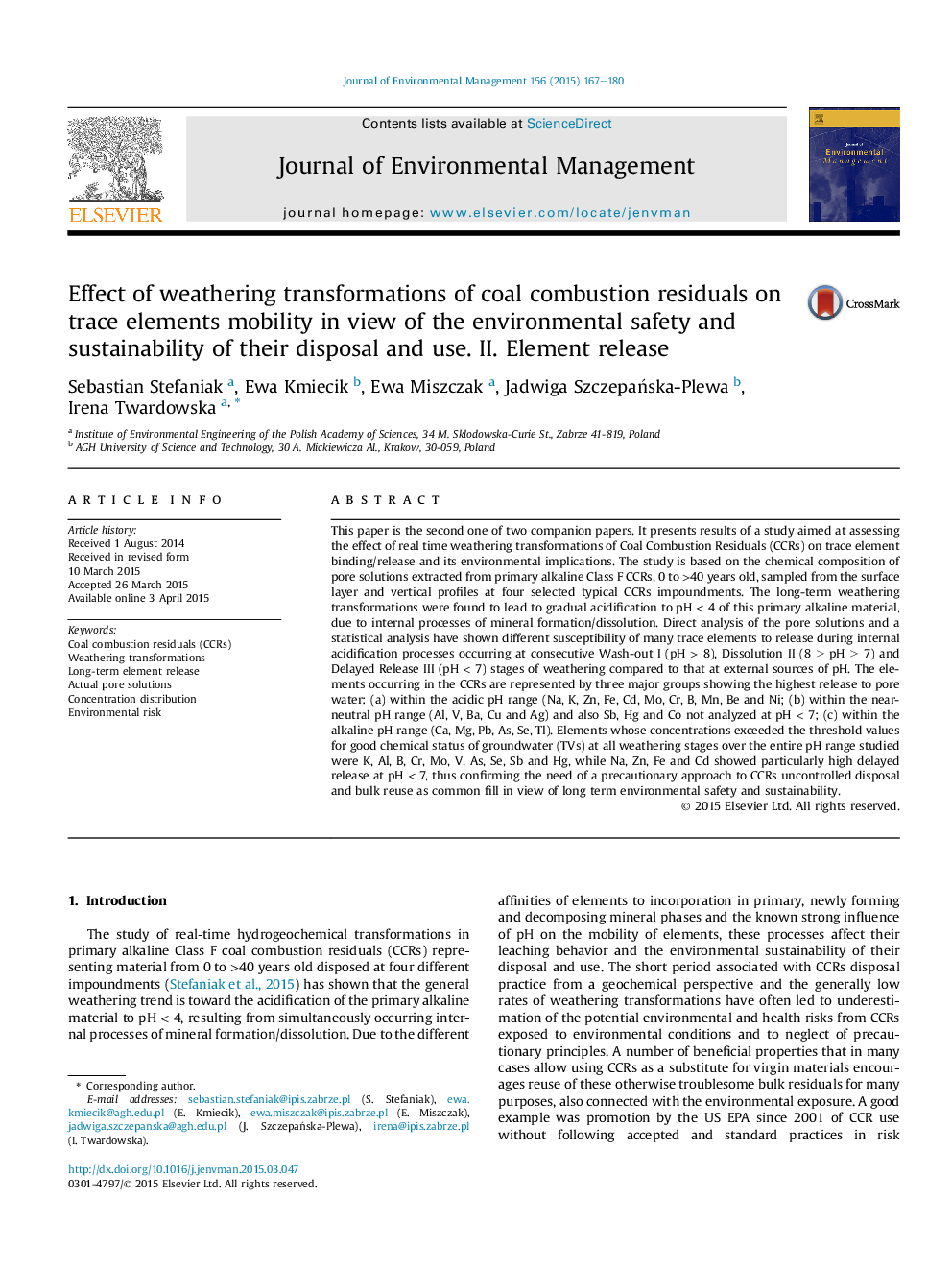| Article ID | Journal | Published Year | Pages | File Type |
|---|---|---|---|---|
| 7482313 | Journal of Environmental Management | 2015 | 14 Pages |
Abstract
This paper is the second one of two companion papers. It presents results of a study aimed at assessing the effect of real time weathering transformations of Coal Combustion Residuals (CCRs) on trace element binding/release and its environmental implications. The study is based on the chemical composition of pore solutions extracted from primary alkaline Class F CCRs, 0 to >40 years old, sampled from the surface layer and vertical profiles at four selected typical CCRs impoundments. The long-term weathering transformations were found to lead to gradual acidification to pH < 4 of this primary alkaline material, due to internal processes of mineral formation/dissolution. Direct analysis of the pore solutions and a statistical analysis have shown different susceptibility of many trace elements to release during internal acidification processes occurring at consecutive Wash-out I (pH > 8), Dissolution II (8 â¥Â pH â¥Â 7) and Delayed Release III (pH < 7) stages of weathering compared to that at external sources of pH. The elements occurring in the CCRs are represented by three major groups showing the highest release to pore water: (a) within the acidic pH range (Na, K, Zn, Fe, Cd, Mo, Cr, B, Mn, Be and Ni; (b) within the near-neutral pH range (Al, V, Ba, Cu and Ag) and also Sb, Hg and Co not analyzed at pH < 7; (c) within the alkaline pH range (Ca, Mg, Pb, As, Se, Tl). Elements whose concentrations exceeded the threshold values for good chemical status of groundwater (TVs) at all weathering stages over the entire pH range studied were K, Al, B, Cr, Mo, V, As, Se, Sb and Hg, while Na, Zn, Fe and Cd showed particularly high delayed release at pH < 7, thus confirming the need of a precautionary approach to CCRs uncontrolled disposal and bulk reuse as common fill in view of long term environmental safety and sustainability.
Related Topics
Physical Sciences and Engineering
Energy
Renewable Energy, Sustainability and the Environment
Authors
Sebastian Stefaniak, Ewa Kmiecik, Ewa Miszczak, Jadwiga SzczepaÅska-Plewa, Irena Twardowska,
